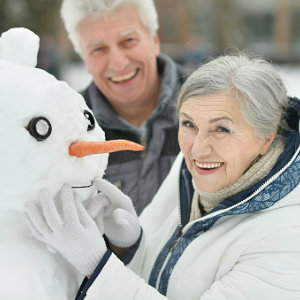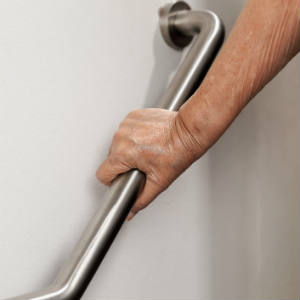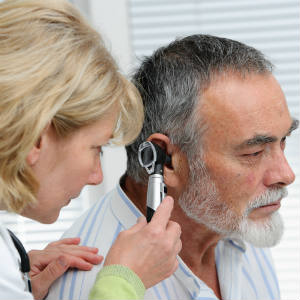Winter weather is upon us, and with that comes season-specific challenges, ranging from slippery roads and sidewalks to temperature-related issues such as hypothermia. Help keep yourself safe with these cold weather safety tips.
Snow Shoveling Safety Tips
WeatherSafety.Ohio.gov offers advice on a Catch-22 situation: the need to shovel snow. On the one hand, it’s important to keep your porch steps, sidewalks, driveway and the like clear of snow and ice because it’s easy to fall on slippery surfaces. On the other hand, snow shoveling can be a hazardous activity, especially if the person shoveling is elderly, is not used to strenuous activity or has chronic health issues.
If you fall into an at-risk category for snow shoveling, it’s recommended that you use a snow blower or, better yet, hire someone to remove your snow. If you shovel your own snow, warm up your muscles first by stretching them. Then pace yourself and stop if you feel short of breath or experience other physical symptoms.
Protect Yourself Against Falling
Even if you have clear pathways around your home, falling is always a risk in the wintertime because you will still encounter snow and ice elsewhere. So, wear “sturdy shoes with rugged soles” or winter boots. Take your time getting places, try not to travel alone, ask for help when needed and avoid walking through deeper accumulations of snow.
We recommend that you read the entire article by WeatherSafety.Ohio.gov for tips on numerous other winter safety topics.
Carbon Monoxide Detection
A guide, titled Winter Warmth and Safety: Home Energy Tips for Older Adults, provides safety recommendations on a broad range of energy-related topics. All the topics are important, but the carbon monoxide section is crucial to read and implement because carbon monoxide poisoning can be deadly.
Each year, about 500 people in the United States die of carbon monoxide poisoning, with 15,000 additional people needing emergency care. So, make sure you install a CO/smoke detector in your home, if you haven’t already. Make sure it works properly and change batteries at least once a year. Perhaps you could replace them on your birthday or another easily-remembered date.
Stay Warm
Cold temperatures can be more than unpleasant. They can also be hazardous. To stay safe, always dress appropriately for the weather by wearing layers of light but warm clothing. When you go outdoors, wear warm, waterproof footwear, plus mittens or gloves, a hat and a scarf.
Winterize your home, as well, with weather stripping and insulation. Have your heating system checked by a qualified professional; it’s important that it’s clean and working well. The HVAC professional can also check to make sure all is being properly ventilated.
Make sure your car is prepared for the winter, which includes having the proper amount of anti-freeze and windshield wiper fluid, and tires with quality treads. Keep your gas tank as full as possible during winter months and keep an emergency kit in your trunk just in case you get stranded. You can find plenty more information at the Centers for Disease Control and Prevention.
Watch for Signs of Hypothermia
Hypothermia occurs when someone’s body temperature gets too low. The National Institute on Aging shares the following early signs of the condition:
- Cold feet and hands
- Puffy or swollen face
- Pale skin
- Shivering (in some cases the person with hypothermia does not shiver)
- Slower than normal speech or slurring words
- Acting sleepy
- Being angry or confused
If you think someone is exhibiting signs of hypothermia, call 911. If possible, get the person to a warmer place and cover him or her with a blanket. Offer a warm drink without alcohol or caffeine. The article offers much more in-depth information on this topic and other winter-related concerns.
Stay warm, stay safe!













